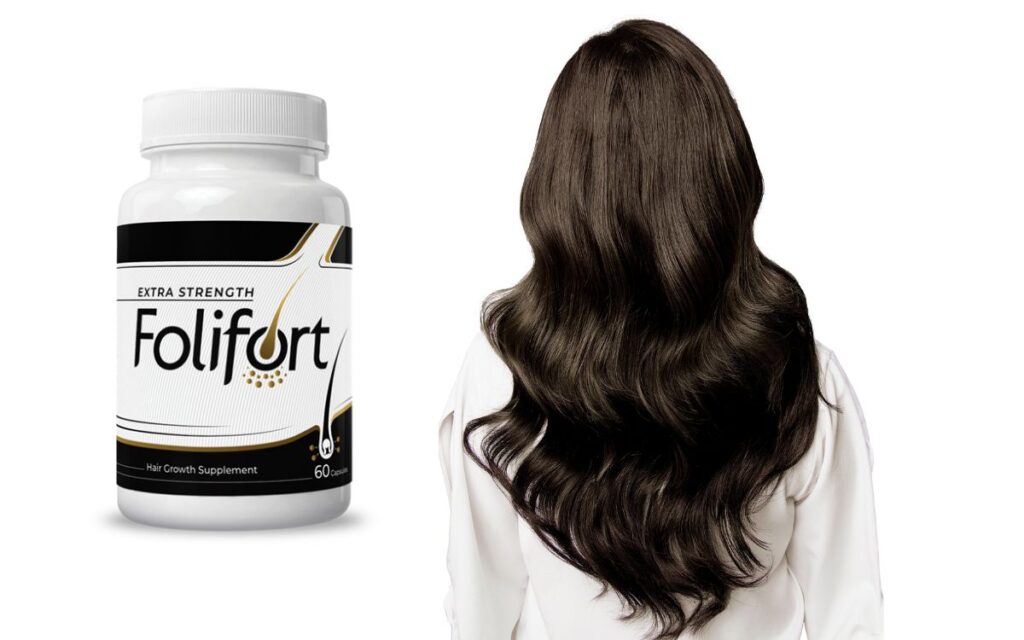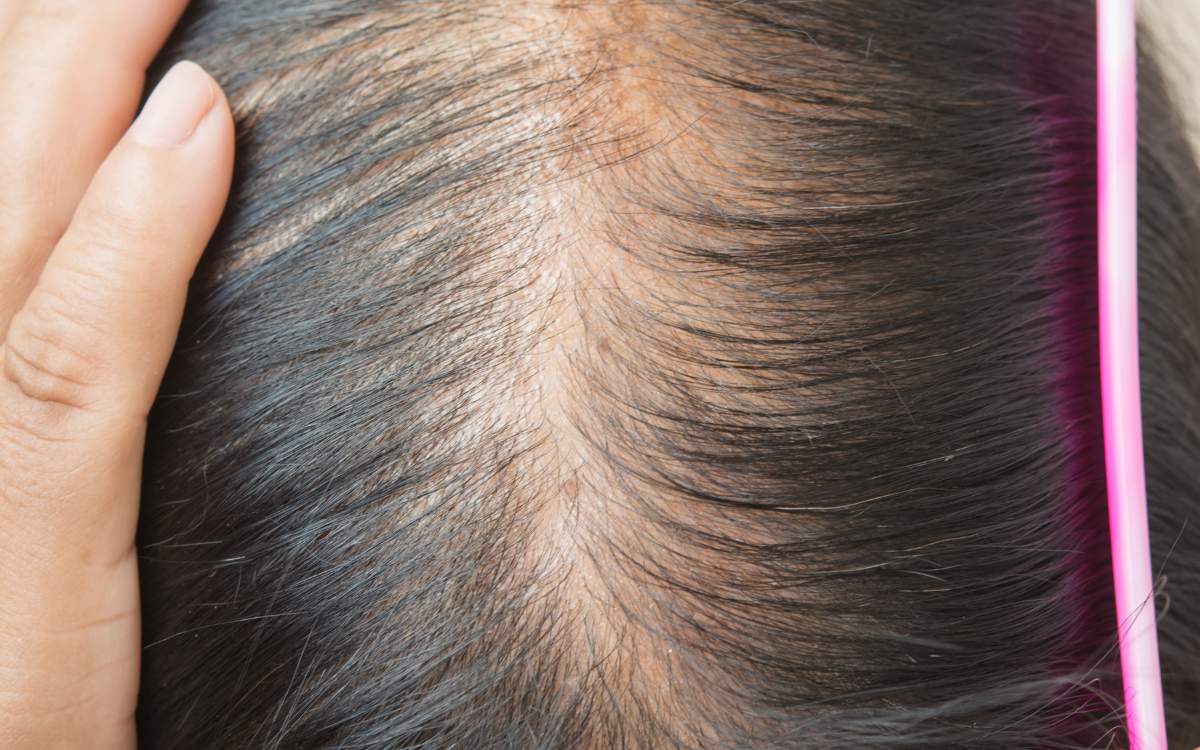Hair is a defining characteristic of appearance for many women, so it can be devastating to have thinning hair.
Although male pattern baldness is far more common, hair loss in women can have physical and psychological effects that hinder their self-confidence and sense of beauty.
Hair loss in women is more likely to be diffuse, which means it is spread over the entire scalp rather than concentrated in one area.
What Are The Causes Of Thinning Hair In Women?
Thinning hair in women can be caused by a variety of factors, including genetics, aging, hormonal imbalances, stress, nutritional deficiencies, environmental pollution, and certain medications.
Genetics is one of the most common causes of thinning hair in women; if you have a family history of female pattern baldness or thinning hair then you are more likely to experience it yourself.
Aging can also be a contributor; as we age, our bodies produce fewer hormones that help to keep hair healthy and full.
Hormonal imbalances, such as those experienced after pregnancy or during menopause, can also lead to thinning hair in women.
Stress is another cause of thinning hair, as it causes the body to produce more cortisol, which can lead to hair loss.
Nutritional deficiencies, such as vitamin B12 or iron deficiency, can also cause thinning hair in women; a lack of protein and other essential nutrients can contribute to weak and brittle hair.
Environmental pollution is another factor that can affect our hair health; pollution in the air can deprive our hair of important nutrients and cause it to become thin and weak.
Finally, certain medications may also be a contributing factor; some medications can cause hair loss as a side effect. If you think this may be an issue for you, speak to your doctor about alternative options.
How To Find Out If You Are Losing Your Hair?
One of the most common signs of hair loss is a thinning crown or receding hairline. This can be easily determined by examining your scalp in a mirror, looking for any areas that may have more exposed skin than normal.
Other signs include patches of thinning hair on your head, increased shedding when brushing or washing your hair, and bald patches that can form as the follicles stop producing hair.
What Are The Steps To Combat Thinning Hair?
Once the underlying cause has been identified, there are steps that can be taken in order to combat thinning hair:
1. Eat a Balanced Diet: Eating foods rich in vitamins and minerals such as protein, iron, and vitamin B12 can help to promote healthy hair growth. It is also important to avoid foods that are high in fat and sugar, as these can cause inflammation and further damage the hair follicles.
2. Reduce Stress: Elevated levels of stress can lead to increased shedding of the hair, so it is essential to find ways to manage stress levels in order to encourage healthy hair growth. Activities such as yoga, meditation, and deep breathing can help to reduce stress levels and improve overall well-being.
3. Try Natural Treatments: There are a range of natural treatments available that can be used to stimulate hair growth and combat thinning hair. For example, using essential oils such as rosemary or peppermint oil on the scalp may help to promote healthy hair growth. Additionally, massaging the scalp with oils such as almond or jojoba oil can help to nourish the hair follicles and encourage stronger, thicker hair.
4. See a Dermatologist: In some cases, thinning hair may require medical treatment in order to be effectively treated. Seeing a dermatologist can help to identify any underlying causes of thinning hair and determine the best course of action.
5. Consider Medication: If the cause is a medical condition such as alopecia or hormonal imbalances, medication may be prescribed by a doctor in order to treat the underlying cause and help promote healthy hair growth. Additionally, medications such as Folifort Hair Growth Pills may be recommended to help stimulate hair growth.
6. Use Hair Care Products Wisely: It is important to use specific hair care products that are designed for thinning or fine hair in order to avoid further damage. Additionally, limiting the use of heated styling tools and avoiding chemical treatments such as dyes or bleaches can help to preserve the hair and encourage healthy growth.
7. Exercise Regularly: Exercise is important for overall well-being and is also beneficial for promoting hair growth. Increasing blood circulation to the scalp by performing exercises such as walking, jogging, or swimming can help to nourish the hair follicles and encourage healthy growth.
8. Get Enough Sleep: It is important to get at least seven hours of sleep each night in order to give your body time to repair itself. Lack of sleep can increase stress levels and trigger further hair loss, so it is important to ensure that you get enough rest and relaxation.
9. Eat Healthily: Eating a nutritious diet is essential for promoting healthy hair growth. Increasing your intake of foods rich in zinc, selenium, and omega-3 fatty acids can help to promote strong and healthy hair. Similarly, avoiding sugary snacks and processed foods can help to decrease inflammation and encourage growth.
10. Avoid Smoking: Smoking can increase free radical damage to the hair follicles and lead to further thinning of the hair. Quitting smoking can help to restore healthy hair growth and reduce any additional shedding.
Making lifestyle changes and trying natural treatments can be effective in combating thinning hair.
However, if the underlying cause is medical, it is important to seek professional advice from a doctor or dermatologist in order to ensure that the most appropriate treatment option is taken.
Additionally, it is important to be aware that hair loss can be temporary and will likely stop after the underlying cause has been treated successfully. In other cases, treatments such as hair transplants may need to be considered in order to restore thicker, fuller locks.

|
Ways To Boost Your Self-Confidence And Feel Beautiful Despite Thinning Hair
1. Wear a stylish hat or scarf: To hide thinning hair, add a stylish hat or scarf to your wardrobe. You can choose from hats and headscarves that are designed to be flattering for any face shape and style. It’s also worth noting that some fabric-based styles, like turbans, provide additional coverage that can help to reduce the visibility of thinning hair.
2. Try a wig or extensions: Wigs and extensions are ideal for those wanting an instant transformation. Whether you’re looking for more length, volume, color, or all three, these accessories provide some great coverage for areas of thinning hair. Synthetic and human hair options are available, so you’re sure to find something that suits your needs.
3. Rock a short hairstyle: Whether it’s a tapered bob or a pixie cut, going for a shorter style can be an easy way to create the illusion of fuller hair. Having fewer layers of hair around your face can help to draw attention away from any areas of thinning hair, while also giving you an opportunity to showcase your facial features.
4. Adopt a healthy lifestyle: Eating plenty of fruits and vegetables, exercising regularly, and getting enough sleep can do wonders for your physical and mental health. It’s important to remember that taking care of your body can help to reduce the appearance of thinning hair, so try to focus on doing things that make you feel good.
5. Treat yourself: Feeling beautiful doesn’t have to involve major changes or spending too much money. It can be as simple as treating yourself to a mani-pedi or getting a massage. Whatever it is that makes you feel beautiful, do it and make sure to take some time for yourself every now and then.
6. Love yourself: Above all else, it’s important to love yourself regardless of your appearance. Remind yourself that you are beautiful and that thinning hair doesn’t have to stop you from feeling confident and fabulous.
With these tips, you can learn to embrace your look and feel beautiful regardless of any perceived imperfections.

